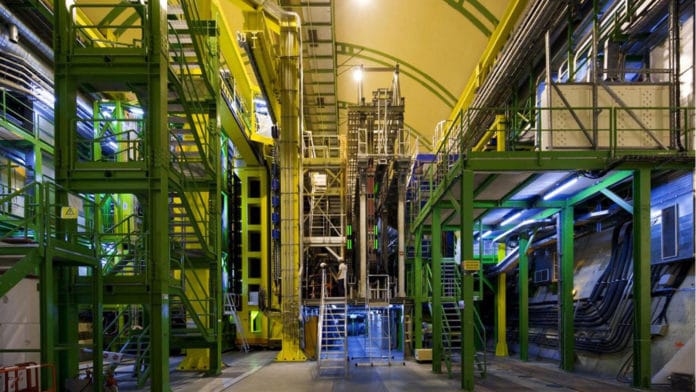In 2020, an LHCB experiment offered evidence that some particles break one of the fundamental principles of the Standard Model. This suggests the possible existence of new fundamental particles and forces.
Further experiments from the same experiment have revealed further hints for phenomena that our current theory of fundamental physics cannot explain.
Physicists have long been hunting for signs of physics beyond the Standard Model that might help us to address some of these mysteries. One way includes searching for particles known as beauty quarks. Beauty quarks are the cousin of the up and down quarks that make up the nucleus of every atom.
Beauty quarks have a concise life. They survive for just a trillionth of a second before transforming or decaying into other particles.
CERN’s giant particle accelerator, the Large Hadron Collider, produces billions of beautiful quarks every year. They are recorded by a purpose-built detector called LHCb.
The previous experiment shows that beauty quarks were decaying into particles called muons less often than to their lighter cousins, electrons. This is impossible to explain in the Standard Model, which treats electrons and muons identically, apart from electrons being around 200 times lighter than muons. As a result, beauty quarks ought to decay into muons and electrons at equal rates. Instead, the physicists at LHCb found that the muon decay was only around 85% as often as the electron decay.
The difference between the LHCb result and the Standard Model was about three units of experimental error, or ‘3 sigmas’ known in particle physics. This means there is only around a one in a thousand chance of the result being caused by a statistical fluke.
If the results are correct, the possible explanation is that a new force pulling electrons and muons with different strengths interferes with how these beautiful quarks decay.
Although, more data is needed to ensure if the effect is natural. Once the result reaches the five sigma threshold, particle physicists only start to consider it a genuine discovery.
Dr. Harry Cliff from the Cavendish Laboratory said, “The fact that we’ve seen the same effect as our colleagues did in March certainly boosts the chances that we might genuinely be on the brink of discovering something new. It’s great to shed a little more light on the puzzle.”
Professor Val Gibson, also from the Cavendish Laboratory, said, “The excitement at the Large Hadron Collider is growing just as the upgraded LHCb detector is about to be switched on and further data collected that will provide the necessary statistics to either claim or refute a major discovery.”
Journal Reference:
- R. Aaij, A.S.W. Abdelmotteleb, et al. Tests of lepton universality using B0→K0Sℓ+ℓ− and B+→K∗+ℓ+ℓ− decays. arXiv:2110.09501
